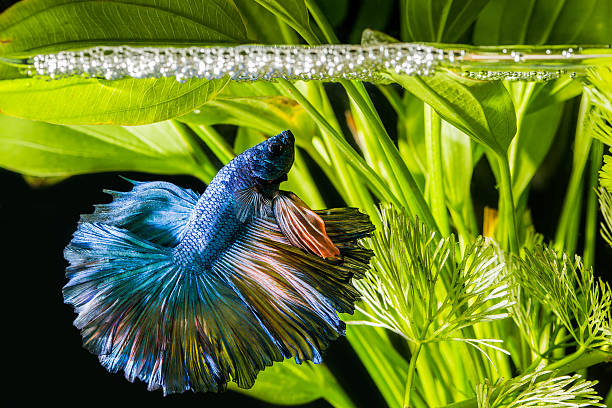Betta fish, also known as siamese fighting fish, are admired for their alluring colors, beautiful fins, and seductive personalities. A well-designed tank is necessary to fully enjoy the beauty of these stunning creatures and to ensure their welfare. Live aquatic plants improve your betta’s health and the appearance of the tank. We’ll walk you through how to make a Betta fish tank with a plant in this article.
1. Choosing the Correct Plants:
To give your betta a serene environment, you must select the right plants. Pick plants that are suitable for bettas that can endure the conditions in your tank. Popular options include:
Due to its illustrious history and sturdiness, Anubias is a superb choice. It can be attached on rocks or driftwood to create an eye-catching appearance.
Java Fern: You can add this plant to the substrate or decorations to give your tank a lush appearance.
Amazon Sword: With its large leaves, Amazon Sword creates a habitat that looks natural and provides hiding spots for bettas.
These low-maintenance plants add texture and improve the water’s quality, like marimo moss balls.
2. Setting Up the Tank:
Bettas require a tank that is at least 5 gallons in size. Better ecosystems and more stable water conditions are provided by larger tanks.
Choose a substrate that will satisfy the plants’ needs. Some plants thrive on gravel, while others thrive in sand. Give the substrate a thorough rinse before adding it to the tank.
3. Planting the Live Plants:
Make sure you have cleansed the plants of any leftover gel or dirt before planting. Eliminate any foliage or root damage.
Techniques Avoid severing the roots of the plants by gently pressing them into the substrate. Use your fingers or tweezers to make teeny holes, then place the roots inside of them. The roots of the plants will be held in place by a substrate.
4. Having Enough Lighting:
The proper amount of light is required for photosynthesis in living plants. Consider investing in a high-quality aquarium light that offers the right spectrum for plant growth. Look into the specific plant types you’ve chosen and their lighting needs.
5. Care and Maintenance:
Check the characteristics of the water frequently to ensure that the ammonia, nitrite, and nitrate levels are kept at the right amounts. Live plants can help with the absorption of some of these toxins to improve the tank environment.
Depending on the sort of plant you are growing, you might need to add substrate or liquid fertilizers to the tank. To prevent overfertilization, abide by the dose recommendations.
Remove any dead or discolored leaves as they enlarge to encourage new growth and preserve the tank’s attractiveness.
Using real plants that compete with the algae for nutrients and light makes it possible to control the growth of the algae. But if algae growth becomes a concern, think about adjusting the length and power of the lights.
6. Adding Betta Fish:
Acclimatization: Make sure the water temperature and other conditions in the new environment are similar to those in the betta’s old home before introducing it there. Float the betta’s bag in the tank for around 15 to 20 minutes to gradually acclimatize it.
Provide your betta with resting and hiding areas by arranging the plants in that way. This resembles their natural habitat and lessens stress.
Conclusion
Live plants added to a betta fish tank are not only beautiful to look at, but they are also good for the fish’s health. It provides them with a more interesting and natural habitat, which increases their happiness and longevity. You can take pleasure in your betta’s fascinating beauty and its lush aquatic refuge by carefully choosing compatible plants, giving the right lighting, and maintaining the tank’s water quality.

